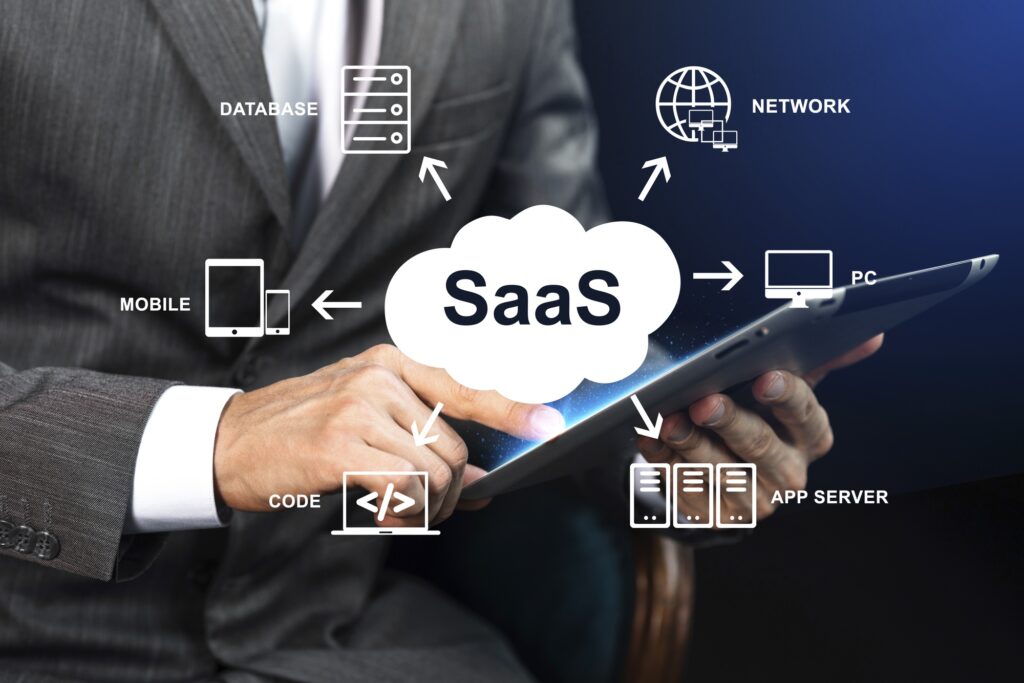In today’s fast-paced digital world, businesses need robust, scalable, and efficient enterprise applications to stay competitive. Full-stack enterprise application development has emerged as a cornerstone for organizations aiming to streamline operations, enhance productivity, and deliver exceptional user experiences. Companies can seamlessly integrate front-end and back-end systems by leveraging full-stack solutions, resulting in cohesive and high-performing applications.
What is Full-Stack Enterprise Application Development?
Full-stack enterprise application development involves creating applications that cater to the unique requirements of businesses, from the user interface (UI) to the underlying server infrastructure. A full-stack developer is proficient in both front-end and back-end technologies, ensuring the development process is efficient and the application is well-integrated. This approach covers:
- Front-End Development: Crafting intuitive and responsive user interfaces using technologies like HTML, CSS, JavaScript, and modern frameworks such as React, Angular, or Vue.js.
- Back-End Development: Building robust server-side logic, databases, and APIs using languages and frameworks like Node.js, Python, Java, Ruby on Rails, or .NET.
- Database Management: Designing and managing databases with systems like MySQL, PostgreSQL, MongoDB, or Oracle to handle large volumes of data securely and efficiently.
- DevOps and Cloud Integration: Ensuring seamless deployment, scalability, and maintenance of applications through cloud platforms like AWS, Azure, or Google Cloud.
Benefits of Full-Stack Solutions for Enterprises
- Cost-Effectiveness: Full-stack developers can handle multiple aspects of development, reducing the need for specialized teams and lowering overall costs.
- Faster Development Cycles: With expertise across the stack, developers can streamline processes, resulting in quicker time-to-market.
- Scalability: Full-stack solutions are designed to grow with the business, ensuring applications can handle increasing workloads and user demands.
- Enhanced User Experience: A unified approach ensures the front-end and back-end work harmoniously, delivering a seamless experience to end-users.
- Customization: Full-stack development allows businesses to create tailored solutions that address specific operational challenges and goals.
Enterprise Application Services: The Bigger Picture
Beyond development, enterprise application services encompass a wide range of offerings aimed at optimizing application performance and ensuring long-term success. These services include:
- Application Modernization: Updating legacy systems to align with modern technologies and business needs.
- Integration Services: Connecting disparate systems and applications to enable smooth data flow and communication.
- Maintenance and Support: Providing ongoing updates, bug fixes, and enhancements to ensure applications remain efficient and secure.
- Data Analytics Integration: Embedding analytics tools to gain actionable insights from business data.
- Cybersecurity Measures: Implementing robust security protocols to protect sensitive enterprise data.
Key Technologies in Full-Stack Development
The success of full-stack enterprise applications relies on the strategic use of cutting-edge technologies. Some of the most commonly used technologies include:
- Front-End Frameworks: React, Angular, Vue.js, and Bootstrap for creating dynamic and responsive user interfaces.
- Back-End Frameworks: Express.js, Django, Spring Boot, and Flask for developing scalable and efficient server-side applications.
- Database Technologies: MySQL, PostgreSQL, MongoDB, Cassandra, and Redis for managing data storage and retrieval.
- Cloud Platforms: AWS, Microsoft Azure, and Google Cloud for hosting and scaling enterprise applications.
- Version Control and Collaboration Tools: Git, GitHub, GitLab, and Bitbucket for code management and team collaboration.

Challenges in Full-Stack Enterprise Application Development
While full-stack development offers numerous advantages, it also comes with its own set of challenges:
- Complexity: Managing both front-end and back-end development requires a deep understanding of multiple technologies and frameworks.
- Scalability Issues: Ensuring that applications can handle increasing user demands and data loads requires careful planning and architecture.
- Security Risks: Protecting sensitive enterprise data from cyber threats demands robust security measures and regular updates.
- Integration Challenges: Seamlessly integrating with existing systems and third-party services can be time-consuming and complex.
- Resource Allocation: Finding skilled full-stack developers who can handle diverse requirements can be challenging.
Best Practices for Full-Stack Enterprise Application Development
To overcome these challenges and ensure successful application development, businesses should follow these best practices:
- Adopt Agile Methodologies: Agile practices enable iterative development, ensuring continuous feedback and improvement.
- Focus on User-Centric Design: Prioritize user experience by creating intuitive and responsive interfaces.
- Invest in DevOps: Implement DevOps practices to streamline deployment, testing, and maintenance processes.
- Leverage Microservices Architecture: Break down applications into smaller, independent services for better scalability and flexibility.
- Implement Robust Testing: Conduct thorough testing at every stage of development to identify and resolve issues early.
- Prioritize Security: Use encryption, secure coding practices, and regular audits to protect data and systems.
Real-World Applications of Full-Stack Enterprise Development
Full-stack enterprise applications are transforming industries by enabling businesses to achieve their goals more efficiently. Here are some examples of real-world applications:
- E-Commerce Platforms: Building comprehensive platforms with user-friendly interfaces, secure payment gateways, and inventory management systems.
- Customer Relationship Management (CRM) Systems: Developing CRMs to manage customer interactions, sales, and support seamlessly.
- Enterprise Resource Planning (ERP) Systems: Creating ERPs to integrate and automate core business processes such as finance, HR, and supply chain management.
- Healthcare Applications: Designing applications for patient management, telemedicine, and data analytics in healthcare.
- Financial Services: Developing secure platforms for online banking, investment management, and financial analytics.
Why Choose Full-Stack Solutions for Enterprise Applications?
Full-stack solutions offer a holistic approach to enterprise application development. By combining advanced technologies, agile methodologies, and a deep understanding of business processes, full-stack developers can deliver applications that drive digital transformation. Whether it’s automating workflows, enhancing customer engagement, or enabling data-driven decision-making, full-stack enterprise applications are the backbone of modern businesses.
Future Trends in Full-Stack Enterprise Application Development
As technology continues to evolve, full-stack enterprise application development is poised to adopt several emerging trends:
- AI and Machine Learning Integration: Embedding AI capabilities to enable predictive analytics, automation, and personalized experiences.
- Blockchain Technology: Leveraging blockchain for secure and transparent transactions and data management.
- Progressive Web Applications (PWAs): Developing PWAs to provide app-like experiences directly in web browsers.
- Serverless Architecture: Using serverless computing to reduce infrastructure costs and improve scalability.
- Low-Code/No-Code Platforms: Empowering non-technical users to create applications with minimal coding.

Conclusion
Incorporating full-stack solutions for enterprise application development and services is no longer a luxury but a necessity for businesses aiming to thrive in a competitive market. By investing in comprehensive, scalable, and innovative applications, organizations can unlock new opportunities, improve operational efficiency, and deliver exceptional value to their stakeholders. Whether you’re starting from scratch or modernizing existing systems, full-stack development is the key to building future-ready enterprise solutions.
The journey to creating impactful enterprise applications begins with choosing the right development partner. By collaborating with experienced full-stack developers, businesses can navigate the complexities of application development and achieve their digital transformation goals. With the right strategy, tools, and expertise, full-stack solutions can empower enterprises to stay ahead in an ever-changing technological landscape.


